Tajinaste Rojo | Tenerife's Endemic Treasure
- May 10
- 4 min read
Tajinaste Rojo (Echium wildpretii) is one of the most unusual plants in the Canary Islands archipelago. This endemic species occurs exclusively on Tenerife and has become its unofficial botanical symbol . It is distinguished by its intensely red, panicle-shaped inflorescences, reaching up to 2 meters in height. This plant blooms only once in its life – usually from May to June – and then dies, leaving seeds for future generations.
Tajinaste Rojo is a biennial plant. In the first year, it develops as a dense rosette of long, narrow, blue-grey leaves covered with delicate hairs. Only in the second year does it sprout an impressive inflorescence shoot, which can reach up to 2 metres in height. It consists of thousands of tiny red flowers, rich in nectar and pollen – a real feast for bees and other pollinators. After flowering, the plant dies, leaving behind seeds for the next generation.

Where can you see Tajinaste Rojo?
The largest number of Tajinaste Rojo can be found in the Teide National Park, especially in the areas of Llano de Ucanca, Roques de García and Minas de San José . In spring, the landscape of the volcanic valley turns into a red wave of flowers against the background of black rocks and the snow cap of the volcano. It is an absolutely unique view and one of the most beautiful natural spectacles in Tenerife.
Tajinaste can also be found in the town of Vilaflor – one of the highest towns on the island, the La Fortaleza region, and also in some highlands of the southern part of the island. The plant also grows at altitudes above 1600 m above sea level, most often on dry, rocky slopes.
Importance for the island's ecosystem and culture
Tajinaste rojo is not only an aesthetic symbol. It is also an important element of the local ecosystem – it attracts pollinators such as bees, butterflies and birds. Bees play a key role in the reproduction of the plant – the flowers die after blooming, and thanks to pollination they can produce seeds. The nectar of this plant produces a creamy, delicate honey of high quality, covered by the Protected Designation of Origin (DOP). Tajinaste is also often used in campaigns promoting environmental protection on the island and is under partial species protection.
When is the best time to admire the blooming tajinaste?
The blooming season is in late spring. The best time to visit is in May, when the fields of red flowers create breathtaking views . At this time, the weather is mostly stable and tourist traffic has not yet reached its summer peak.
However, it is worth paying attention to the weather conditions in a given year – as a result of climate change, spring is sometimes colder, which delays the start of vegetation. In addition, tajinaste blooms at different times depending on the altitude: the higher, the later the flowers appear.
If you want to see this wonder of nature in exceptional conditions, plan a morning trip – early morning sunlight beautifully highlights the contrast between the red plant and the black volcanic ground.
Regardless of the time of day, remember not to get too close to it and not to pick the flowers – it is a protected plant.
How to prepare for a trip?
When going to Teide Park, it is worth taking care of appropriate clothing (it can be cold at high altitudes) and hiking shoes. Don't forget sun protection and water. It is also a good idea to arrive early in the morning or late in the afternoon to avoid the crowds and admire the flowers in the soft light.
All the information on how to prepare for visiting Teide itself can be found in this post: Climbing Teide - new rules. How to prepare to conquer the highest peak in Spain?
Entry to Teide National Park is currently free, but changes are planned – I will keep you updated.
Interesting facts and other varieties of Tajinaste
The name "tajinaste" comes from the Guanche language and means "needle", referring to the slender, pointed shape of the inflorescence (it reminds me of a dwarf's hat :)).
The species was named after Hermann Wildpret, a Swiss-German botanist who directed the Acclimatisation Garden of La Orotava in the 19th century and contributed significantly to the documentation of the flora of the Canary Islands.
Echium wildpretii is just one of several varieties of plants known as "tajinaste". There are about 15 species and subspecies endemic to the Canary Islands:
Echium wildpretii subsp. trichosiphon – a pink variety from La Palma,
Echium simplex – tajinaste blanco, a white variant from Tenerife, growing on the steep slopes of Anaga,
Echium callithyrsum – a blue-flowered species endemic to Gran Canaria,
Echium webbii – a shrubby form from La Palma, resembling a candlestick.
Tajinaste Rojo is a true wonder of nature and one of the most emblematic natural phenomena of Tenerife. Its appearance in the landscape heralds the arrival of spring and is a celebration for nature lovers, photographers and all those looking for authentic experiences away from commercial attractions. Don't miss the opportunity to see this endemic wealth with your own eyes!

























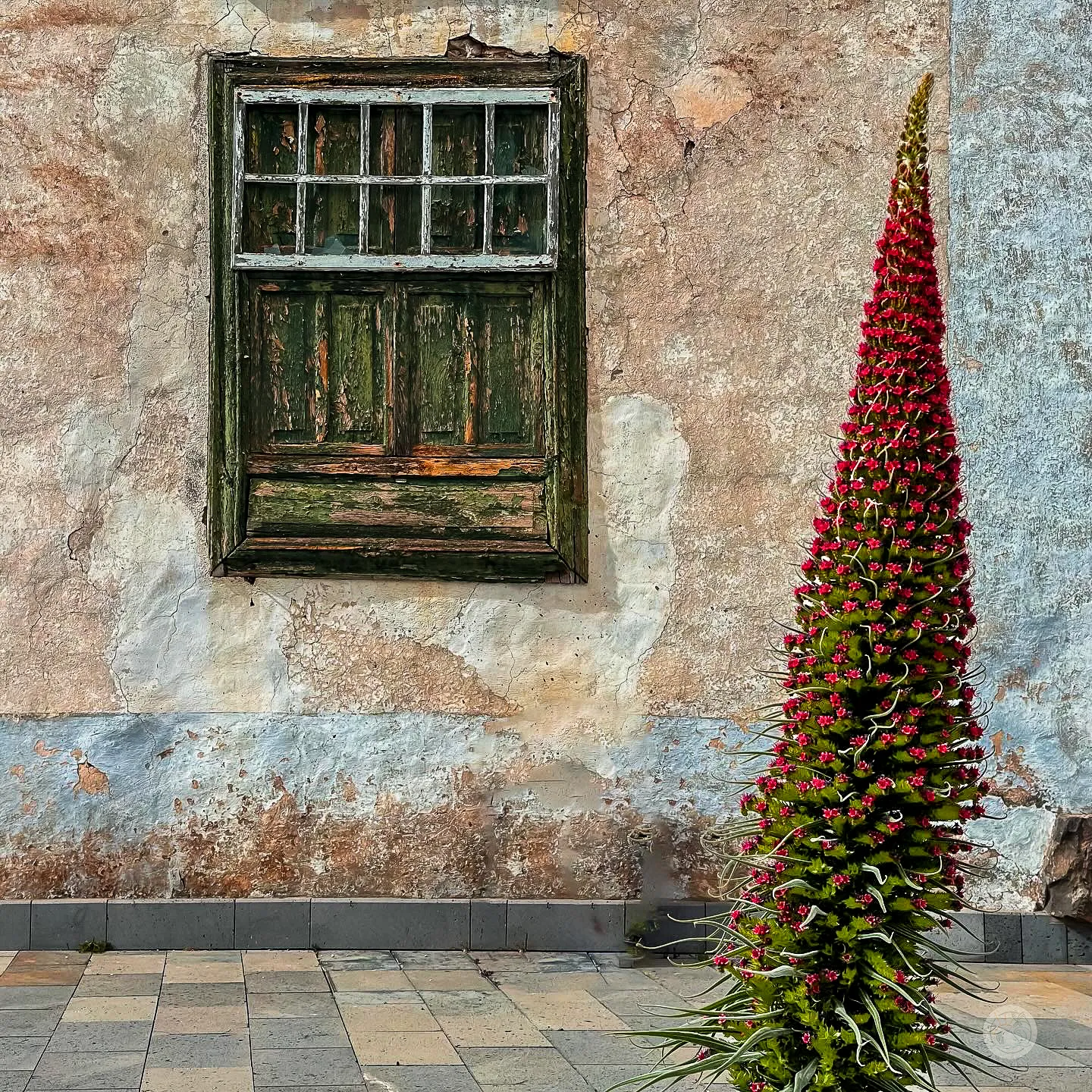

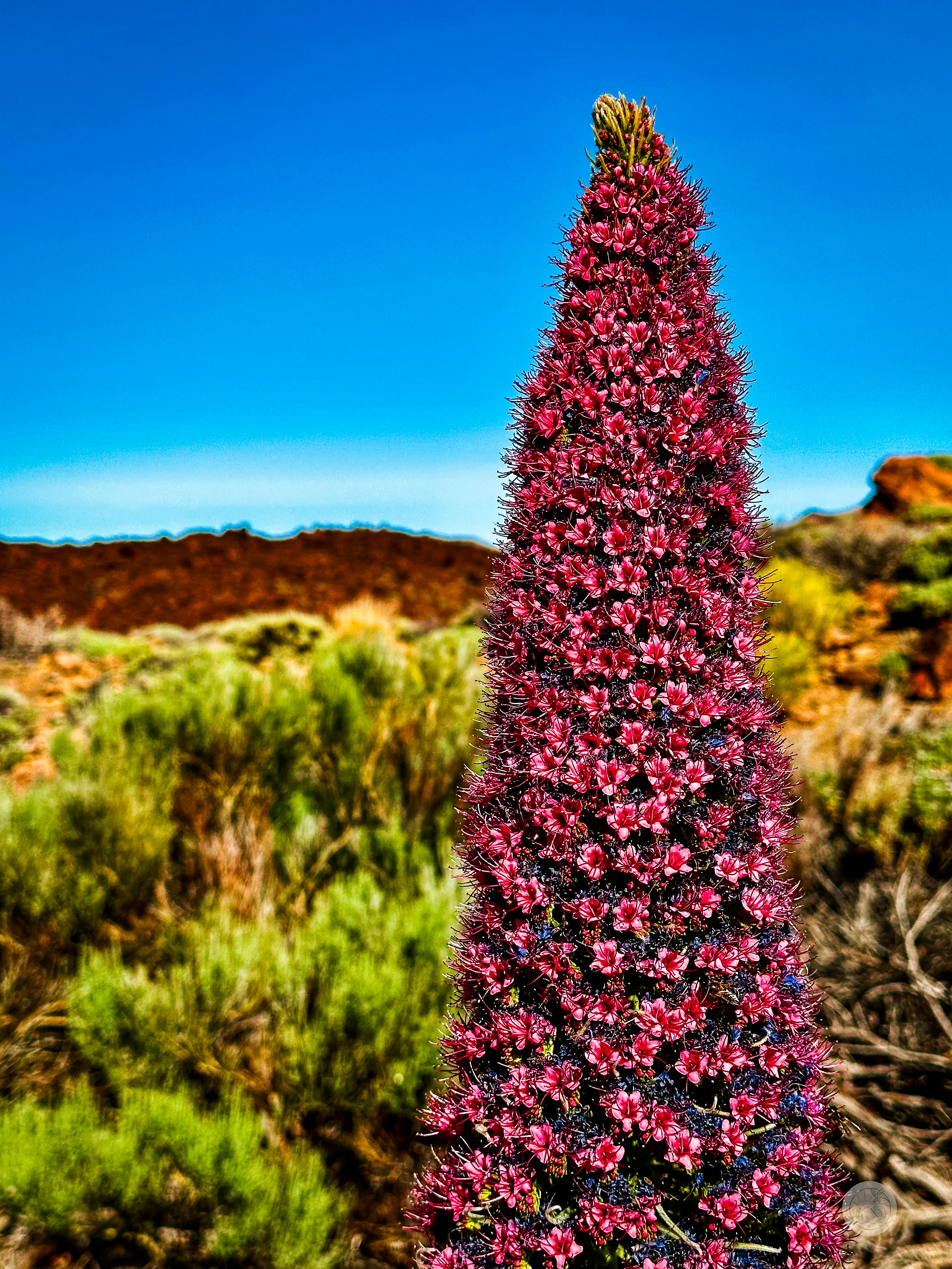


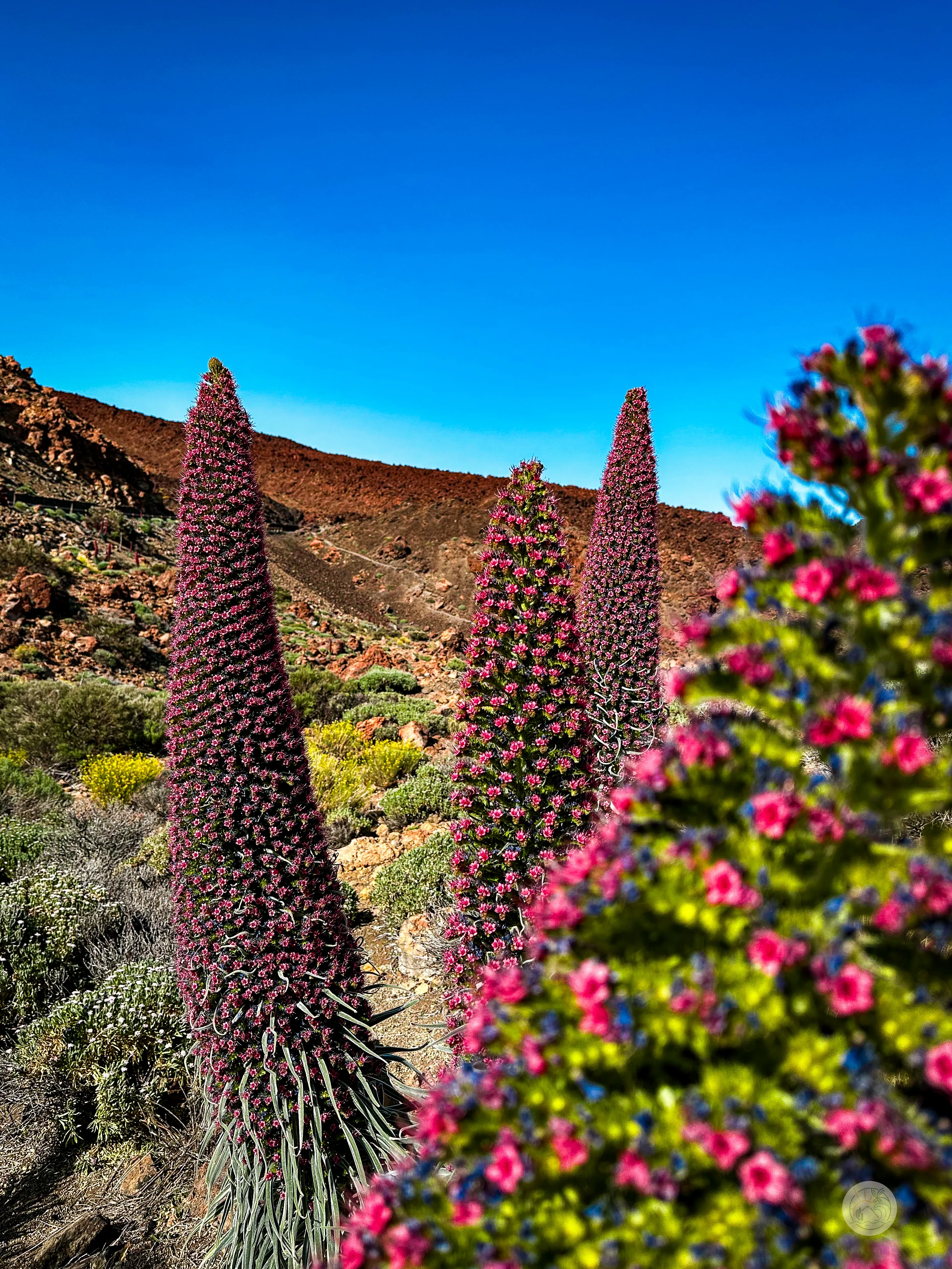
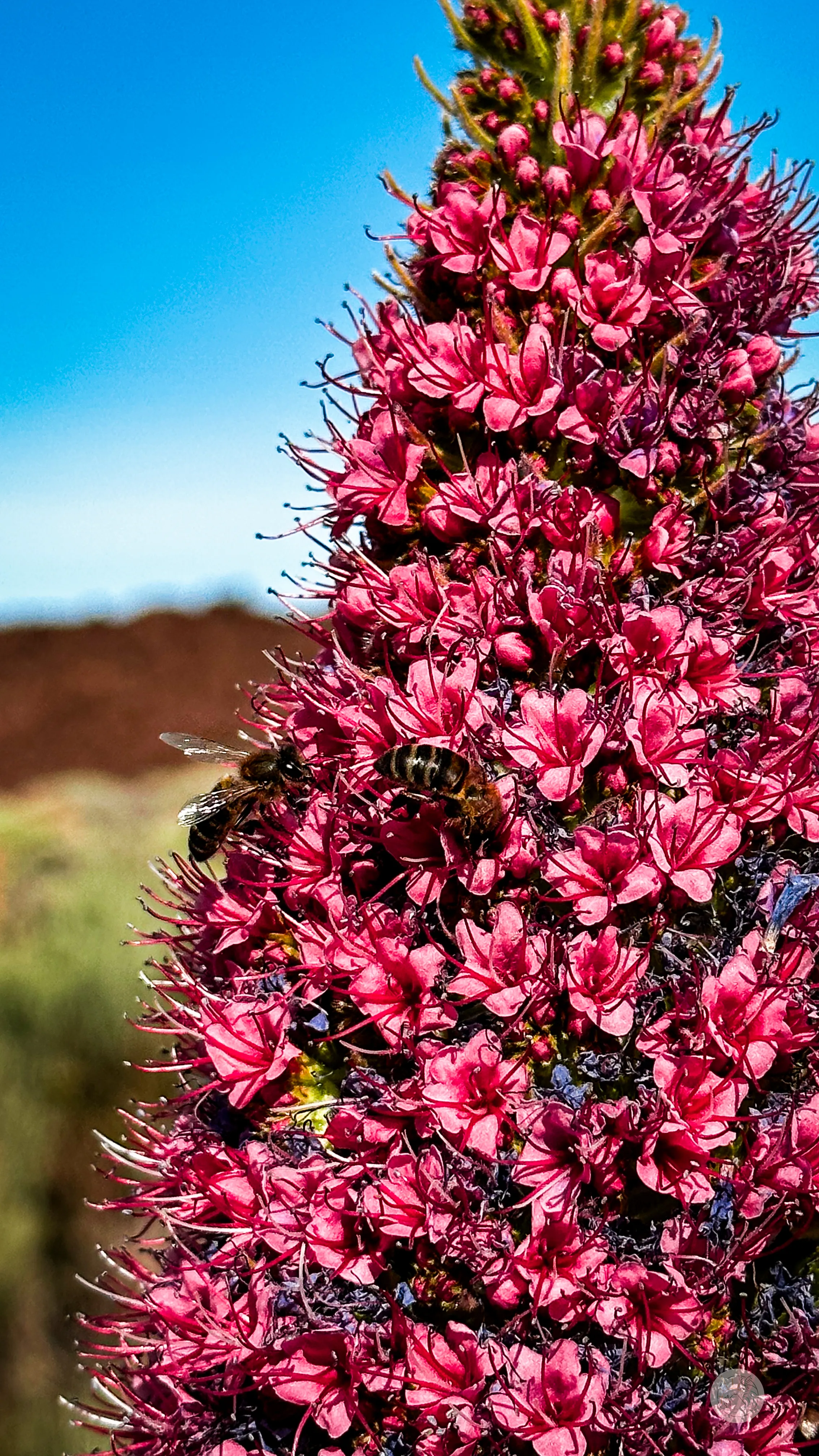
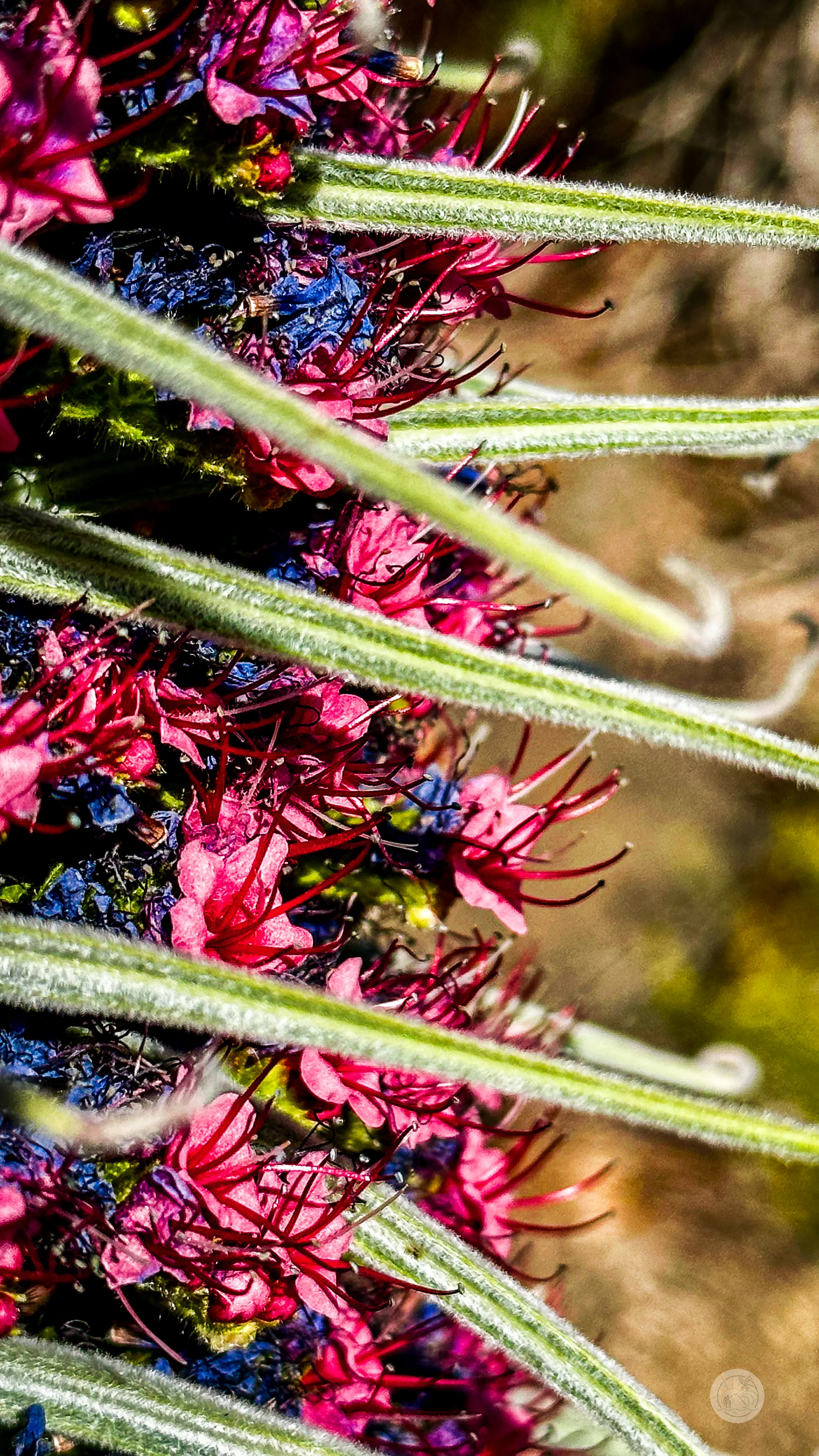









Comments